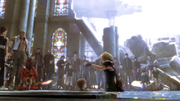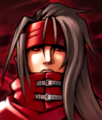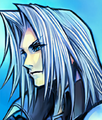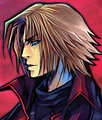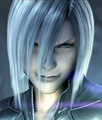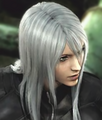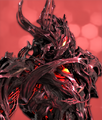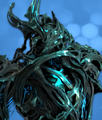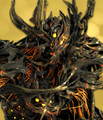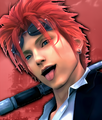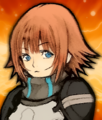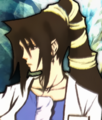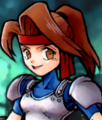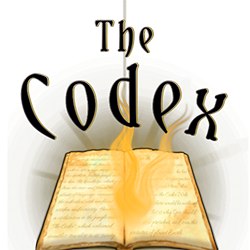The official discord link if you wish to join the discord: https://discord.gg/j5RKwCvAFu
The background art comes from Cherylann1960.
Final Fantasy VII: Difference between revisions
m |
GiverOfThePeace (talk | contribs) (clean up and re-categorisation per CFD, replaced: level+ → level (2)) m |
||
| Line 41: | Line 41: | ||
==Calculations== | ==Calculations== | ||
<br> | <br> | ||
*[https://thecodex.wiki/User:SuperSaiyan2Link/Bahamut%27s_Megaflare Bahamut's Megaflare] (Room level | *[https://thecodex.wiki/User:SuperSaiyan2Link/Bahamut%27s_Megaflare Bahamut's Megaflare] (Room level) | ||
*[https://thecodex.wiki/User:SuperSaiyan2Link/Genesis_Rhapsodos_Takes_Flight Genesis Rhapsodos flight speed] (Superhuman) | *[https://thecodex.wiki/User:SuperSaiyan2Link/Genesis_Rhapsodos_Takes_Flight Genesis Rhapsodos flight speed] (Superhuman) | ||
==Power of the Verse== | ==Power of the Verse== | ||
The verse has a plethora of standard humans, though standard fighters and those who can fight Shinra's Combat Simulations reach '''Room level | The verse has a plethora of standard humans, though standard fighters and those who can fight Shinra's Combat Simulations reach '''Room level''' and '''Massively Hypersonic+''' speeds. It becomes even more powerful with those who faced Sephiroth and inadvertently his Super Nova attack, which increases the entire verse to '''Multi Supercluster level''' with '''Faster Than Light''' speeds. Later, with the introduction of the Whispers and their defeat in Destiny's Crossroads, characters are bumped to '''Universe level''' with '''Extra-Temporal''' speeds. This verse also has quite a lot of hax, including [[Mind Manipulation]], [[Death Manipulation]], [[Life Manipulation]], [[Deconstruction]], etcetera | ||
==Canon== | ==Canon== | ||
Revision as of 20:44, 19 June 2024
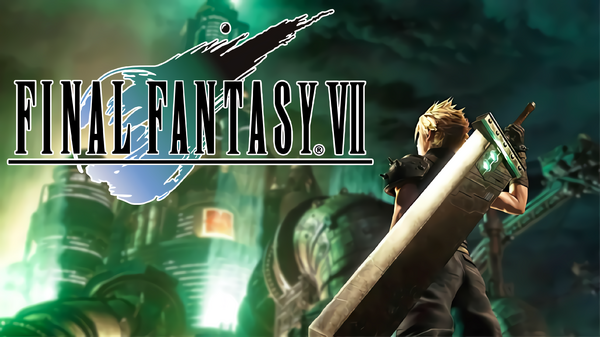
Background
Final Fantasy VII is a compilation of video games produced by Square Enix. Although Final Fantasy VII is one of many games in the Final Fantasy series, it has spawned it’s own sub-series compilation of games (and one theatrical film) in one collective universe; called the Compilation of Final Fantasy VII. The first game of this series, Final Fantasy VII, released in 1997 for the PlayStation.
Final Fantasy VII is the story of grief and loss, set in a highly technologically-advanced setting, where a major corporation (the Shinra Power Electric Company) has been using their reactors in the city of Midgar to sap life from the planet. The story heavily follows a protagonist named Cloud Strife, who is an expert swordsman dealing with memory issues and a crippling identity crisis, as he makes his way through the world and makes friends who are all equally as troubled as he. Their mission is to stop the planet’s destruction at the hand of a parasitic alien Jenova, and her humanoid son, Sephiroth. Many other games in the Compilation focus around either the events leading up to the battle for the planet, or the events afterwards.
The gameplay across the five video game titles is incredibly different throughout, with not a single one feeling the same as the other. In the original Final Fantasy VII (FF7), the game takes on very JRPG gameplay. Before Crisis: Final Fantasy VII (BC) also takes on JRPG-type gameplay, although it is far more traditional. In Crisis Core: Final Fantasy VII (CC), the game takes place in a birds-eye-view, where the player can free-roam a small area and manually attack enemies at will. Dirge of Cerberus: Final Fantasy VII (DoC) takes the unique approach of turning the game into a third-person shooter, whilst the Final Fantasy VII Remake (FF7R) shifted the series into an action-oriented RPG. Final Fantasy VII: Advent Children (AC) is a theatrical film.
Each title in the Compilation of Final Fantasy VII is set within the same universe. The only exception would be Final Fantasy VII Remake, although it is all-but-confirmed to be set in the same universe but just an altered timeline.
Cloud Strife is consistently seen as the main character of the series, although he only appears as the protagonist in three of six of the titles (FF7, AC, FF7R). The protagonist of Crisis Core is Zack Fair; Cloud’s best friend and war hero, who protected Cloud leading up to the events of the original game. The protagonist of Before Crisis is an unnamed Turk; a secret investigator hired by Shinra to foil a planet-threatening plot. And finally, the protagonist of Dirge of Cerberus is Vincent Valentine; a former Turk, and optional party member of the original game.
The main recurring enemy in the Compilation is a former-war hero and SOLDIER named Sephiroth, who was once a calm and collected advisor of Shinra, who greatly helped in winning Shinra’s war on Wutai. However, after Sephiroth learned of his birth as a biological experiment infused with the cells of a parasitic alien, he twisted into becoming maniacal and planned on eradicating the entire planet with a meteor.
Terms
- Ancients/Cetra: The Ancients, also known as the Cetra, were a race of extremely magically-potent humanoids that lived on the Planet thousands of years ago. They were the creators and users of Materia, who lived in harmony with one another. However, after the attack by Jenova, the Cetra were widely wiped out; the only Cetra remaining by the time of the original game being Aerith Gainsborough.
- Lifestream: The Lifestream is an ethereal force that exists within the planet, that gives life to all things on the planet. Usually appearing as a wave of teal energy, the Lifestream contains the souls of the deceased, who circle the planet, although very few souls are able to retain their individuality within it. The Shinra Power Electric Company has taken advantage of the Lifestream and fuels it though their Mako Reactors, which powers the giant city of Midgar.
- Mako/Materia: Mako energy is a liquified form of the Lifestream which is what Shinra, and most of the planet, uses as a power resource. It is seen flowing in small pools where the Lifestream seeps through the planet. When Mako energy becomes crystalized, it forms into small circular balls known as Materia; as crystalized Mako, and thus crystalized Lifestream, Materia comes in several different colors and contains tons of different types of magic.
- White & Black Materia: This is Materia that was gifted upon the Cetra by the Planet, which both wield incredibly powerful magic within. The White Materia is used to speak directly to the Planet itself, and can summon the magic, Holy, which calls upon the entire power of the planet to protect it from harm. On the flipside, Black Materia was used as a way to summon the magic, Meteor, which calls upon incredible destructive power to destroy the entire planet.
- Protomateria: This form of Materia was infused within Vincent Valentine during experimentation, and is noted to be the Materia that summons a Weapon known as Omega. When summoned, as a sort of means to “preserve the planet,” Omega will sap the Lifestream of the entire planet, and then fly off to a new planet to return the Lifestream there.
- Jenova: The source of all evil in this universe is the parasitic calamitous alien, named Jenova. Thousands of years before the events of the original game, Jenova crash landed on the planet and began sapping its life energy through the Lifestream. Jenova was confronted by the ancient civilization of the planet, known as the Cetra, although they were unable to kill her. Instead, Jenova was simply able to assume the form of a Cetra in order to disguise itself, and then was frozen away within the Northern Crater. Countless years later, Jenova was excavated and presumed to be a Cetra, and thus had her cells harvested and used in experiments on humans; which results in people like Genesis Rhapsodos, Angeal Hewley, Sephiroth, and the entire rest of the SOLDIER program to a lesser degree. Her cells spark a “Reunion,” in which anything containing her cells will instinctively rejoin with her.
- S-Cells: Cells taken directly from Sephiroth himself, which include not only Mako energy but Jenova cells as well. Although they are not direct forms of Jenova’s cells, those infused with this (barring Zack Fair) will follow the Reunion. Cloud Strife himself was infused with S-Cells during his four year experimentation, which would become the catalyst for a lot of his decisions later on.
- G-Cells: These are cells produced under Project Gillian, codenamed Project G. This project had Jenova cells be injected within a woman named Gillian Hewley, before then taking them out and injecting them within babies in the womb; notably, Genesis Rhapsodos and Angeal Hewley. When containing these cells, the holder is able to turn other people into genetic clones of themselves. However, they are also subject to terrible cellular degradation.
- Geostigma: Also called Jenova’s Memetic Legacy, Geostigma is a horrible plague that swept the planet following Sephiroth and Jenova’s supposed defeat. Those infected with Geostigma will become infected with S-Cells and thus be subject to the Reunion. Those infected with Geostigma become extremely physically weak, and experience intolerable pain in the affected area that secretes a black ooze.
- WEAPONs: Powerful, gargantuan monsters that are called upon by the Planet during a time of distress and self-preservation. They seem to be an extension of the Planet’s will, and will stop at nothing to preserve the Lifestream. However, they have a hard time deciphering friend from foe, especially due to the energy barrier that Sephiroth erected to conceal his location; and thus the Weapons will attack nearly anything in their path on a blind rampage.
- Buster Sword: This bulky sword was an extremely expensive sword created by the father of Angeal Hewley, who bought it for his son when he learned that he was going to join the SOLDIER program. Angeal would go on to carry this sword on him at all times, considering it a symbol of his honour and dreams. Once Angeal’s time of passing came, he passed down the Buster Sword (symbolically passing down his honour and dreams) to his student, Zack Fair. Zack would wield this sword with care and respect for his late mentor, going on to then give it to Cloud Strife before he passed as well.
Calculations
- Bahamut's Megaflare (Room level)
- Genesis Rhapsodos flight speed (Superhuman)
Power of the Verse
The verse has a plethora of standard humans, though standard fighters and those who can fight Shinra's Combat Simulations reach Room level and Massively Hypersonic+ speeds. It becomes even more powerful with those who faced Sephiroth and inadvertently his Super Nova attack, which increases the entire verse to Multi Supercluster level with Faster Than Light speeds. Later, with the introduction of the Whispers and their defeat in Destiny's Crossroads, characters are bumped to Universe level with Extra-Temporal speeds. This verse also has quite a lot of hax, including Mind Manipulation, Death Manipulation, Life Manipulation, Deconstruction, etcetera
Canon
The Compilation of Final Fantasy VII is extremely organized and has a very clear-cut set of events, which only becomes slightly confusing due to the events of Final Fantasy VII Remake. However, it has become widely accepted that Final Fantasy VII Remake is simply an alternative timeline of events, but still a part of said Compilation.
The Original Timeline goes as follows:
- Before Crisis: Final Fantasy VII (2004)
- Crisis Core: Final Fantasy VII (2007)
- Final Fantasy VII (1997)
- Final Fantasy VII: Advent Children (2005)
- Dirge of Cerberus: Final Fantasy VII (2006)
The Remake Timeline goes as follows:
- Final Fantasy VII: The First Soldier (2021)
- Crisis Core: Final Fantasy VII Reunion (2022)
- Final Fantasy VII Remake (2020)
- Final Fantasy VII Remake Intergrade: Episode INTERmission (2021)
- Final Fantasy VII Rebirth (2024)
Note #1: "Final Fantasy VII: Ever Crisis", beginning release in 2022, is canon. However, it is not included on the timeline merely because it is a compiled retelling of all of the above titles, and not its own event.
Note #2: Despite some games not appearing on either timeline, both timelines follow the same events (save for a few minor details such as the design of the Buster Sword) up until the timeline's divergence at the end of Final Fantasy VII Remake.
Knowledgeable Members
Characters
-
Spirit Energy Physiology
Protagonists
-
Cloud
-
Zack
-
Aerith
-
Tifa
-
Vincent
Antagonists
-
Sephiroth
-
Angeal
-
Genesis
-
Kadaj
-
Loz
-
Yazoo
-
Weiss
-
Whisper Rubrum
-
Whisper Viridi
-
Whisper Croceo
Other
-
Cissnei
-
Reno
-
Elena
-
Emma
-
Freyra
-
Shelke
-
Lucrecia
-
Jessie
